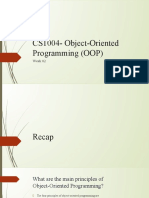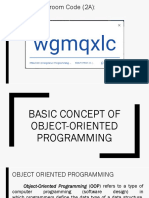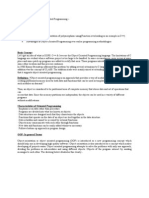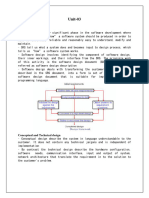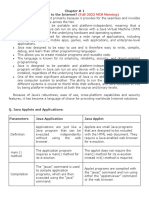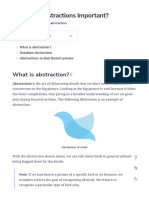0% found this document useful (0 votes)
18 views36 pagesClasses OOP
The document outlines a lecture on Object-Oriented Programming (OOP), focusing on key concepts such as classes, objects, encapsulation, inheritance, and polymorphism, with practical implementations in Java. It emphasizes the advantages of OOP, including information hiding and abstraction, and provides examples to illustrate these concepts. Additionally, it mentions course objectives, contents, and recommended reading materials.
Uploaded by
upipersonal8465Copyright
© © All Rights Reserved
We take content rights seriously. If you suspect this is your content, claim it here.
Available Formats
Download as PPTX, PDF, TXT or read online on Scribd
0% found this document useful (0 votes)
18 views36 pagesClasses OOP
The document outlines a lecture on Object-Oriented Programming (OOP), focusing on key concepts such as classes, objects, encapsulation, inheritance, and polymorphism, with practical implementations in Java. It emphasizes the advantages of OOP, including information hiding and abstraction, and provides examples to illustrate these concepts. Additionally, it mentions course objectives, contents, and recommended reading materials.
Uploaded by
upipersonal8465Copyright
© © All Rights Reserved
We take content rights seriously. If you suspect this is your content, claim it here.
Available Formats
Download as PPTX, PDF, TXT or read online on Scribd
/ 36














